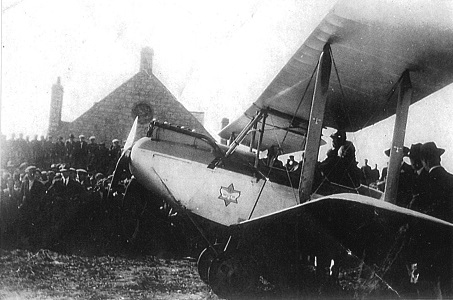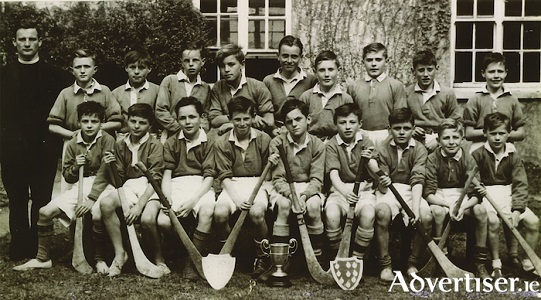Old Galway
AN TAIDHBHEARC, 90 YEARS A’GROWING

by Tom Kenny
On December 3rd, 1927, a group of people met with the idea of setting up an Irish Language Theatre in Galway. The committee elected were Dr. Séamus Ó Beirn, President; Seán Mac Giollarnáith, Treasurer; Liam Ó Briain and Séamus Luibhéid, Secretaries; An tAthair Pádraic Ó hEidhin, Liam Ó Buachalla, Síle Ní Chinnéide, Tomás Ó Raghallaigh, Mícheál Ó Droighneáin, Donal Ó Riordáin and Tomás Ó Máille.
NEW DOCKS ROAD

by Tom Kenny
This photograph was taken from the far side of the docks c.1900 and shows New Docks Road in the distance and Bonham Quay on the right.. None of the buildings we see were on the 1820 map, most were built in the mid-nineteenth century outside the old city walls and many of them were once part of the Burbidge or Chambers estates.
HILLS OF LOWER DOMINICK STREET

by Tom Kenny
This photograph, dated 1905 was part of an advertisement for Hill & Co. Cycle Makers and for Hill’s Dublin Studio, a photographic gallery. Both of these were located in this building in Lower Dominick Street. You have to hand it to Edmund Hill, he was a dab hand at publicity, and advertised extensively.
His photographic studio was patronised by their Royal Highnesses the Duke of Connaught and the late Duke of Edinburgh (Saxe Coburg and Gotha), Lords Killanin, Wallscourt, Coleridge etc., and ‘our patrons range from the Royal Family to the peasant’. He sold photographs from stamp size (a shilling a dozen) to life size. He was ‘an authority on children, his photographs of them were awarded first place against all competitors’ “To be in the fashion was to pay his studio a visit”.
Lady Mary Heath in ‘The Swamp’

by Tom Kenny
Lady Mary Heath was a famous pioneering pilot. She was born in Knockaderry near Newcastle West, Co Limerick, in 1896. She was an accomplished sportswoman who helped introduce women’s track events to the Olympics. The 1920s was an era when the world seemed to have gone aviation mad, thanks to the exploits of Charles Lindbergh and Amelia Earhart. In 1927, Lady Mary became the first woman to hold a commercial licence in Britain, the first woman to parachute out of an aircraft, and the first pilot to fly a small open-cockpit plane from Cape Town to London. She set records for altitude in a small plane. For much of the 1920s she was one of the best known women in the world, brave, determined, and accomplished.
Coláiste Éinde, ninety years
by Tom Kenny
Coláiste Éinde was founded very shortly after the State itself was founded. The aim was to educate boys through the medium of Irish so that they would go on to St Patrick’s teacher training college, get secure employment for life, and in turn, teach a new generation of boys through Irish. It started life in Furbo House, an old house belonging to the Blake family. A domestic problem arose within the family who owned the house, so the school’s stay there was brief and they had to leave at Christmas 1930. The college was transferred to Talbot House in Talbot Street, Dublin, the following month.
The art of hurling

by Tom Kenny
In the year 1527, it was decreed in one of the Galway Statutes that “At no time to use ne occupy ye hurling of ye little balle with the hookie sticks or staves, nor use no hand balle to play without the walls, but only the great foot balle”. It seems the authorities of the day were trying to limit the playing of hurling, but they might as well have tried to hold back the tide.
THE ‘ABBEY’ CHURCH

by Tom Kenny
In the year 1296, Uilliam Liath De Burgo started to build a monastery for the Franciscans on a site roughly where the Courthouse is today. It became known as “St. Francis’ Abbey on the island of Saint Stephen on the north side of the town”. The island was formed by the river on the west side, and by a branch of the river running through what is Woodquay and Mary Street today, to join the main stream above O’Brien’s Bridge. A second and smaller island lay between St. Stephen’s and the town wall, so in order to communicate with the town, two bridges were necessary, one at the junction of Mary Street and Abbeygate Street and the other at the Little Gate.
Seapoint Corner about one hundred and fifty years ago

by Tom Kenny
This was Seapoint Corner c1865. The buildings we see, running from the left, are Prospect Lodge; Corrig View; Elm View; Prairie House with the balcony, which was built 1855-1861 by Colman O’Donohoe who had obviously spent some time in America; Beachmount; Villa Marina, which had the sign Michael Horan, Grocer over the door; Sunnyside Lodge; Seapoint House; then a gap which led into Seapoint Terrace; and finally, the thatched building which was George Fallon’s Baths. The sign on his gable read Hot Baths and Bathing, No Refunds and his family operated the baths business at least from 1855 to 1894.
